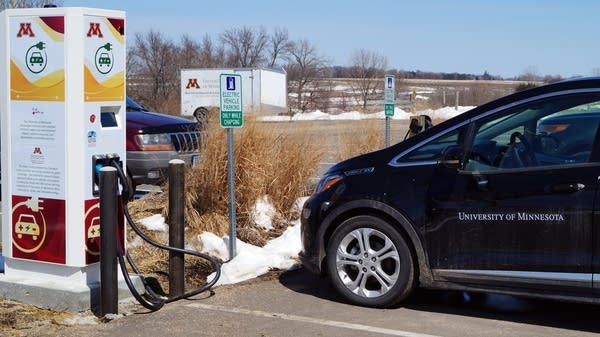Climate Curious: When are electric vehicle fast chargers coming to greater Minnesota?

The University of Minnesota West Central Research and Outreach Center in Morris got a new fast charger for electric vehicles two years ago.
Courtesy of Esther Jordan of WCROC
Go Deeper.
Create an account or log in to save stories.
Like this?
Thanks for liking this story! We have added it to a list of your favorite stories.


